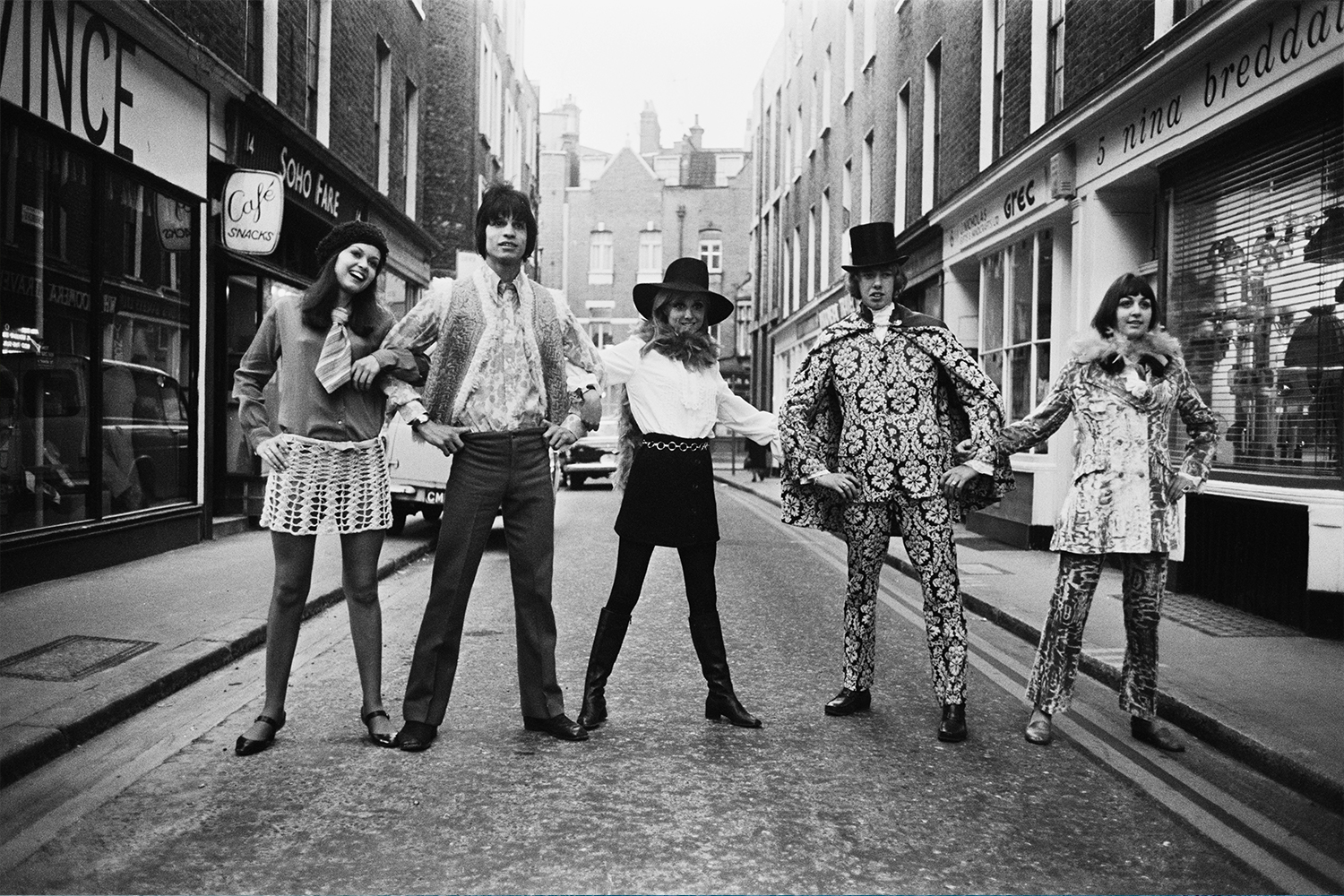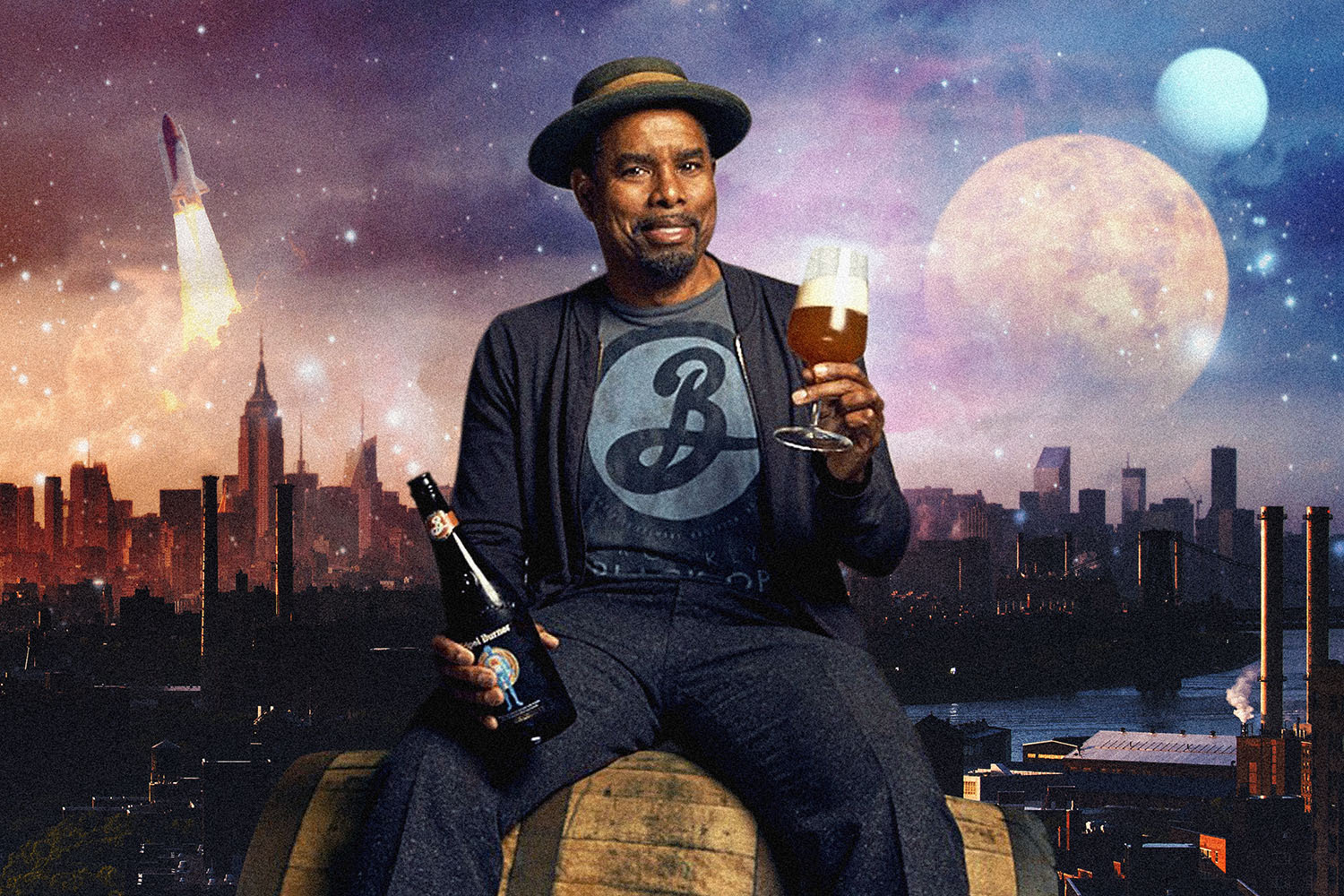Over the next two weeks, we’ll be publishing a series of interviews with thought leaders from a number of industries about the impact of COVID-19 and — more importantly — the improvements they expect to last well into the future. Get to know Post-Pandemic America.
The world of tailoring has taken an unforeseen turn over the past year. Following the outbreak of a global pandemic, business hours have been forced into unpredictable territory, social schedules among the population have been stripped and, from a sartorial point of view, wardrobes have been overhauled. Given that there’s not much to do in our day-to-day lives right now (and no clear end of this in sight), the need for comfort in clothing is key, which, in turn, leaves formalwear feeling just a tad unnecessary. So what does this mean for Savile Row, London’s famed street of bespoke tailoring which relies on exactly this kind of clothing in order to thrive? A general consensus of fear, no doubt, but there’s one Savile Row tailor who shows signs of no such thing: Edward Sexton.
Sexton is one of the most important figures in the history of Savile Row. Put simply, he paved the way for its modernity. After working for an array of tailors across the early ‘60s, he met a talented salesman called Tommy Nutter who shared his avant-garde sensibilities. Together, in 1969, they opened Nutters of Savile Row and, with it, transcended all notions of the traditionally closed-off street. Characterized by architectural silhouettes, roped shoulder sleeve heads, suppressed waists and generous lapels, Sexton’s approach to cutting was revolutionary, proclaiming a masterful blend of glamour, elegance and sex-appeal by way of a bespoke suit. Five decades on, with menswear taking a flamboyant turn, Sexton’s mutual influence on the worlds of both fashion and bespoke tailoring feels beyond compare.
Having lived through all kinds of societal shifts — from the flamboyance of the swinging ’60s to the digitalized mindset of millennial generations — Sexton is a pro at responding to change. We were extremely curious to hear his thoughts on the evolution of tailoring (both before and after coronavirus), so we sat down with the living legend for a very enlightening conversation …
InsideHook: Can you tell us a bit about how you got into tailoring?
Edward Sexton: I like to think that I’ve always been a very proactive person. I started out as a young apprentice and, soon after, assistant cutter at Harry Hall on Regent Street. This was an equestrian tailoring house which specialised in long-waisted, slightly flared jackets — very comfortable pieces to wear. I loved the long, lean silhouette of this house style and I loved assisting with its creation, but during these early days, I worked with a certain amount of reluctance, because, inside me, I wanted to do other things. I was certainly influenced and informed by the creations of my peers, but I wanted to develop a brand new vision based on my own style, and the only way I could really start to do this was by taking on private clients. So eventually, I did, and it was around the time I met Tommy Nutter.
So what made you open Nutters of Savile Row in 1969?
I met Tommy in 1967 when I started working as a cutter for Donaldson, Williams and G. Ward. One day, over a beer after work, I explained to him that I was moonlighting alongside my job with private clients. Cut a long story short, Tommy suggested we collaborate on a brand new look to test out in his social circle — one which was growing in influence. It also helped that he was being financed by big figures like Cilla Black and Peter Brown (the new manager of The Beatles).
In the ’60s, Savile Row was such a boring street — it still is, to some extent. All the tailoring companies had big heavy curtains across the windows, so it was by no means a place for window shopping. You’d go there, see your tailor, and move on. But elsewhere in London, Chelsea’s King’s Road was booming and the nearby Carnaby Street was kicking off. These were the streets with proper style, and the attitude of their people certainly influenced the vision between Tommy and I, but the problem was that none of their shops sold clothing of real quality. So that was the gap we decided to fill: luxury tailoring informed by an avant-garde attitude.

And what did that look like, in sartorial terms?
Well, our first prototype was a long-waisted, fitted jacket with a narrow shoulder. It was very restricted but very flattering and, after some tweaks, it went on to become our house look. The gay world was just coming into force at this time, and the men in it wanted to look immaculately dressed, so they loved a really long and lean approach to tailoring. With Tommy as the salesman and myself as the cutter, we opened our Savile Row shop on Valentine’s Day in 1969, and in a break from everyone else, we had dramatic open window displays to show off our totally different and, in my opinion, really sensational suits. Since then, I’ve always remained very true to the distinctive features which represent my design identity — like strong architectural lines and generous curved lapels — because they set me apart from other people. Through more of a social lens, I think we drove an idea of what the suit should really be: sharp, sexy and full of glamor.
Ok, so five decades on from this, what’s changed for you?
To meet the needs of new generations, my approach to designs are a little bit more relaxed now. That’s not to say they’ve lost their original identity; they’re still comfortably close, so I can maintain my beliefs in the lines I want to create. A lot of guys today are very athletic and they have these big shoulders, but I don’t find that problematic. Actually, it has encouraged me to be braver and a touch more aggressive with the lines around the upper half of their silhouette. Texturally speaking, I think that people are very much aware of touch today. They crave comfort, so there’s a certain level of softness desired from fabrics, but they still need to have a genuine luxury to them in order to reach their highest potential for comfortability. Still, I can’t pretend to just be selling suits all the time, because suits are not being worn like they once were. Especially in light of the past year.
So what was your initial response to the pandemic?
As I said before, I’m a proactive person, and this mentality has enabled me to survive some very serious situations in the past. At one point, Tommy and I were given limited electricity and we could feel the threat of our business dying. So in response to this, I got all the names of our overseas clients and booked a flight to New York. I wrote each of them a letter, telling them I’d be staying in a hotel for five days with my workbook and swatches if they wanted to pay a visit. I returned to London with a full book of orders. From something that was an initial problem, being proactive brought us more global attention. The same kind of thing happened when we experienced recessions in the ’70s and the ’80s. So my point being, although this COVID situation is disastrous and, from a business point of view, very inconvenient, I’m not worried about the status of my business because we’re being proactive, so I’m confident we’ll survive.
Proactive in what way?
So at the end of last year, still in the middle of this pandemic, we re-opened a ready-to-wear showroom and exhibition space on Savile Row. We were already offering this on our online e-commerce site, but we wanted to bring a bit of pizazz and attention back to the Row during these hard times. Ready-to-wear seemed like the perfect approach to doing this, because even though bespoke suits aren’t desired so much as we speak, people do still have an appetite for tailored clothing. Not necessarily as a full ensemble, but more so as single pieces — like a blazer or a relaxed shirt — to bring them a subtle amount of luxury in a pared-down outfit. These designs still capture all the expressions of my garments, so it seemed like the right time to amplify this sector of our business and show it in a physical place. Savile Row needs people back on it. In fact, it needed people even before this pandemic. So this is my show of strength to the world that it’s still alive and kicking. There are more eyes on businesses now than ever, so I want people to see what we’re doing and understand it. Everyone will want to feel sexy again once this is all over.
Definitely. Did you run into some physical protocols during this process?
Business is different, I can’t pretend it isn’t. We’re following all the essential protocols like masks, sanitizing and social distancing, but of course, customers are a little more cautious at showroom appointments or personal fittings these days. That being said, I strongly believe that if you’re offering a good garment, it should speak for itself. The term I use for this is “hanger appeal” and it’s the idea that a customer can assess the shape and silhouette of an item purely from it sitting on a hanger. Over the past year, this is something I’ve turned to in the process of sales — whether they be shown online or in our showroom.
Do you think that this pandemic has changed people’s approach to buying suits on Savile Row?
In the most traditional idea of buying a Savile Row suit, yes. But from my point of view, it hasn’t had a detrimental impact on my business because I have adapted myself to the desires of a customer. Leisurewear may have exploded over the past year, but that’s not to say that the interest for tailoring is gone. It’s the highest form of luxury, and people will always want it, even if, right now, it’s just in small doses. I’ve found that a special jacket, for example — be it in velvet or luxury wool — is still desired in a wardrobe because it can be dressed down with a pair of jeans and still look just as stylish. I myself haven’t worn a shirt and tie in over a year, but that’s not to say that my wardrobe has lost its luxury feel. It’s just reframed; particularly through roll-neck sweaters in either cashmere or wool, which I think look fabulous with tailoring. Sure, it’s not the classic way of styling it, but I still feel equally as dressed. And I love a good pair of trainers with certain pieces of tailoring. People may not be wearing fully tailored ensembles right now, but they’re still wearing single pieces — so the ingredients of a suit have just been reframed to work with the times. It’s only natural, and it’s still completely elegant to me. But I don’t think it will stay like this forever.
So what do you think will happen after this pandemic?
The old Savile Row mentality said that fashion and tailoring were two separate worlds. I’ve always disagreed with this. There’s a co-dependency between the two and I draw upon both within my work: the quality from tailoring and the flamboyance from fashion. Whether everyone on Savile Row admits it or not, we’re all influenced by the things we see on social media today, and the strongest appetite — in my opinion — is the collision of these two worlds. Glamor in menswear has really been on the rise over the past few years, and tailors can’t close their eyes to it.
So because we’ve been stripped of nightlife, fun and sartorial glamor over the past year, my prediction is that the public will want to dress more extravagantly than ever once this pandemic is over. They will want to do something revolutionary — and the most obvious way to express that kind of action is through clothing. Psychologically, I think people benefit from wearing good clothes because it makes them look and feel sexy, so as long as tailors can meet a modern demand when it comes, I think the Savile Row suit will be revitalized. And it’s incredibly exciting. Suits are modes of armor which help people face the world, so when it’s time to do that again, I’ll be there with some serious sartorial sculpturing to carry them through it.
This article was featured in the InsideHook newsletter. Sign up now.






















